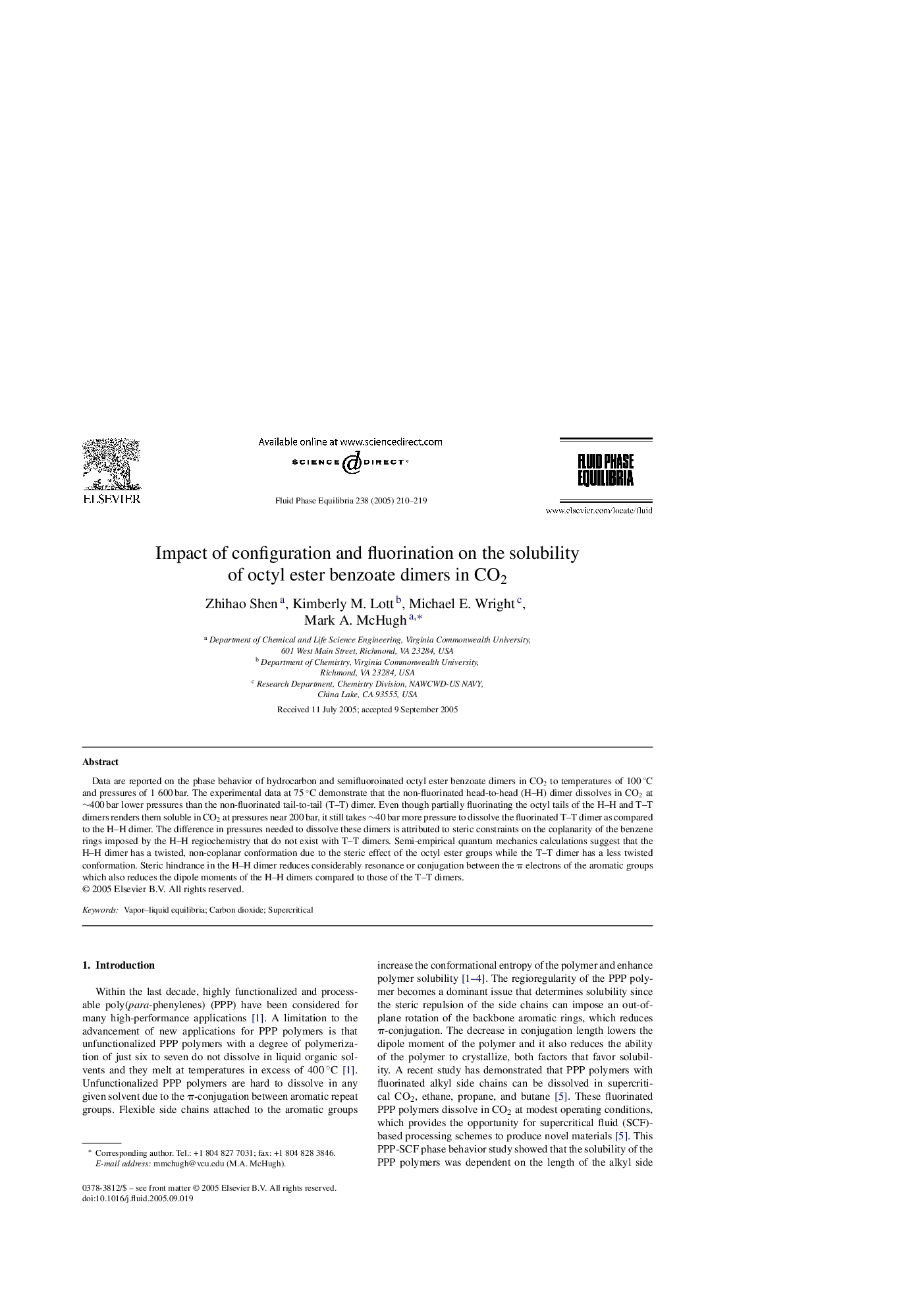| Article ID | Journal | Published Year | Pages | File Type |
|---|---|---|---|---|
| 10270974 | Fluid Phase Equilibria | 2005 | 10 Pages |
Abstract
Data are reported on the phase behavior of hydrocarbon and semifluoroinated octyl ester benzoate dimers in CO2 to temperatures of 100 °C and pressures of 1 600 bar. The experimental data at 75 °C demonstrate that the non-fluorinated head-to-head (H-H) dimer dissolves in CO2 at â¼400 bar lower pressures than the non-fluorinated tail-to-tail (T-T) dimer. Even though partially fluorinating the octyl tails of the H-H and T-T dimers renders them soluble in CO2 at pressures near 200 bar, it still takes â¼40 bar more pressure to dissolve the fluorinated T-T dimer as compared to the H-H dimer. The difference in pressures needed to dissolve these dimers is attributed to steric constraints on the coplanarity of the benzene rings imposed by the H-H regiochemistry that do not exist with T-T dimers. Semi-empirical quantum mechanics calculations suggest that the H-H dimer has a twisted, non-coplanar conformation due to the steric effect of the octyl ester groups while the T-T dimer has a less twisted conformation. Steric hindrance in the H-H dimer reduces considerably resonance or conjugation between the Ï electrons of the aromatic groups which also reduces the dipole moments of the H-H dimers compared to those of the T-T dimers.
Related Topics
Physical Sciences and Engineering
Chemical Engineering
Chemical Engineering (General)
Authors
Zhihao Shen, Kimberly M. Lott, Michael E. Wright, Mark A. McHugh,
